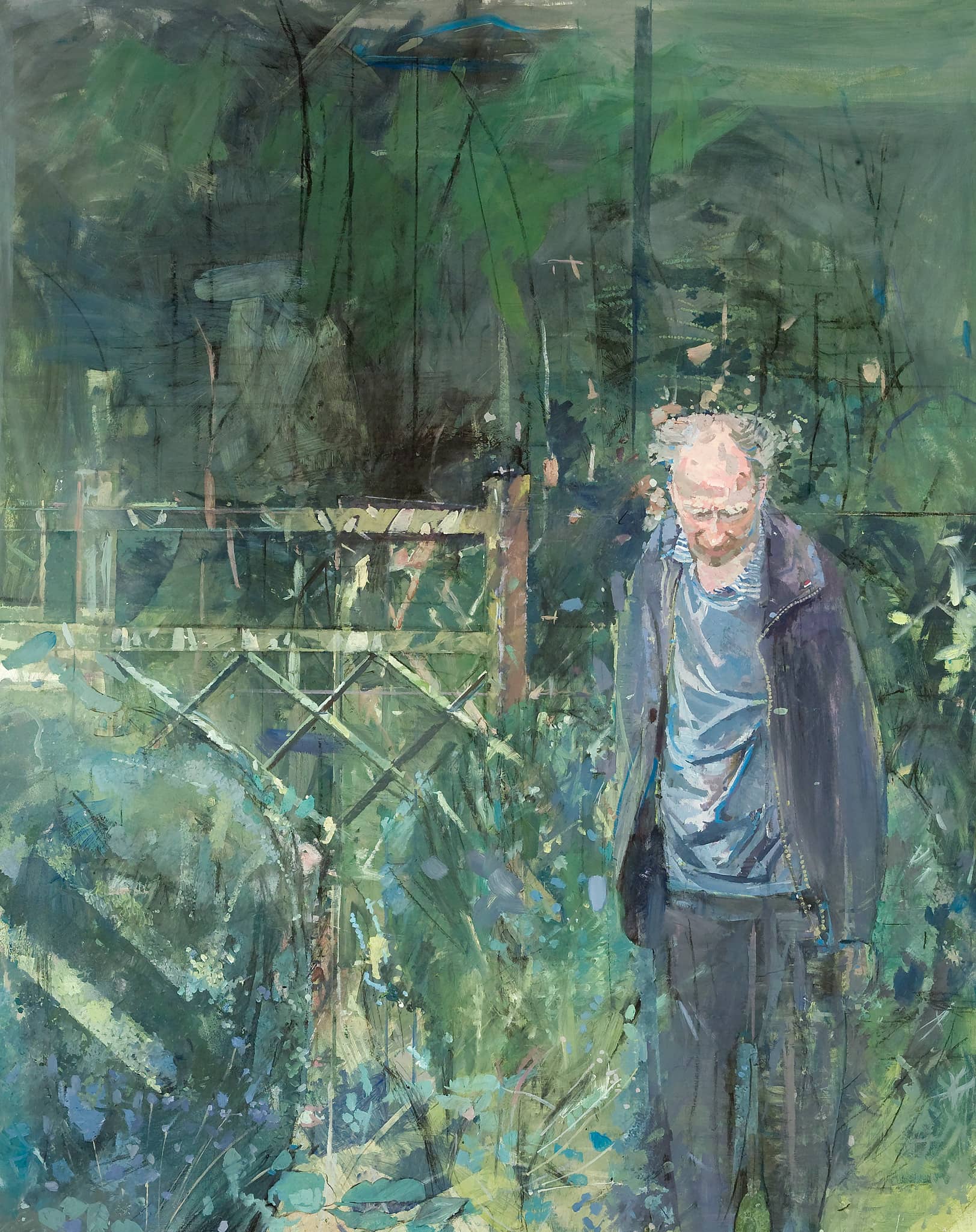Ian Hamilton Finlay

Ian Hamilton Finlay
oil and charcoal on paper, 153 x 183 cm
2009
From 1997 to 2013, Hogan visited Little Sparta, the garden created by Finlay in the Pentland Hills. regularly, painting the garden and then him, as she gradually got to know him. While she was drawing, he would suddenly appear and chat for a bit and then disappear. So, she drew him in a fragmented way over several years. Finlay was recorded by Cathy Courtney, 1993–97, Artists’ Lives, National Life Stories.
Consider now the images, very different in style and feeling, of the artist of Little Sparta, seen in his green world, dressed in his casual gardener’s blue gabardine jacket and sky blue sweater. These are not portraits in any conventional sense; he is presented, rather, as if an aerial emanation of the genius loci, not a figure in the landscape so much as a presence within it. These pictures have a provisional urgency, discovering likeness (to occasion as well as to face and figure) and present-ness not by way of the meticulous over-all procedures that compose the Beehive paintings but in the rapid transference of immediately visual instantaneity to paper by means of the quickened stroke of charcoal and oil wash.
Extract from Eileen Hogan: Moments of Vision by Mel Gooding from his essay in Bountiful 238 Sweet Promise FH 172 Golden Gain FR 59 2013 published by the Fleming Wyfold
Consider now the images, very different in style and feeling, of the artist of Little Sparta, seen in his green world, dressed in his casual gardener’s blue gabardine jacket and sky blue sweater. These are not portraits in any conventional sense; he is presented, rather, as if an aerial emanation of the genius loci, not a figure in the landscape so much as a presence within it. These pictures have a provisional urgency, discovering likeness (to occasion as well as to face and figure) and present-ness not by way of the meticulous over-all procedures that compose the Beehive paintings but in the rapid transference of immediately visual instantaneity to paper by means of the quickened stroke of charcoal and oil wash.
Extract from Eileen Hogan: Moments of Vision by Mel Gooding from his essay in Bountiful 238 Sweet Promise FH 172 Golden Gain FR 59 2013 published by the Fleming Wyfold

Ian Hamilton Finlay
oil and charcoal on paper, 45 x 98 cm
2005

Ian Hamilton Finlay
oil and charcoal on paper, 98 x 70 cm
2000
The message of these portraits is that there is always more to be said, more than one can ever possibly say, something that a sound recording, or pencil or brush, can never truly capture. In another portrait, Hogan depicts Finlay from the back, retreating into his garden and walking away. This is perhaps a kind of anti-portrait—a portrait that denies the logic of recognition through the face, emphasizing instead the way we come to know people through posture, through the gait of their walk and the back of their head as much as the front. Through these “fragments,” Hogan creates not so much portraits of Finlay, but encounters with him and his garden at various points in time. As a result, these are never static images, but always of him on the move, either walking or talking.
Extract from Painting Portraits, recording Lives by Sarah Victoria Turner for Eileen Hogan: Personal Geographies published by Yale University Press, 2019.